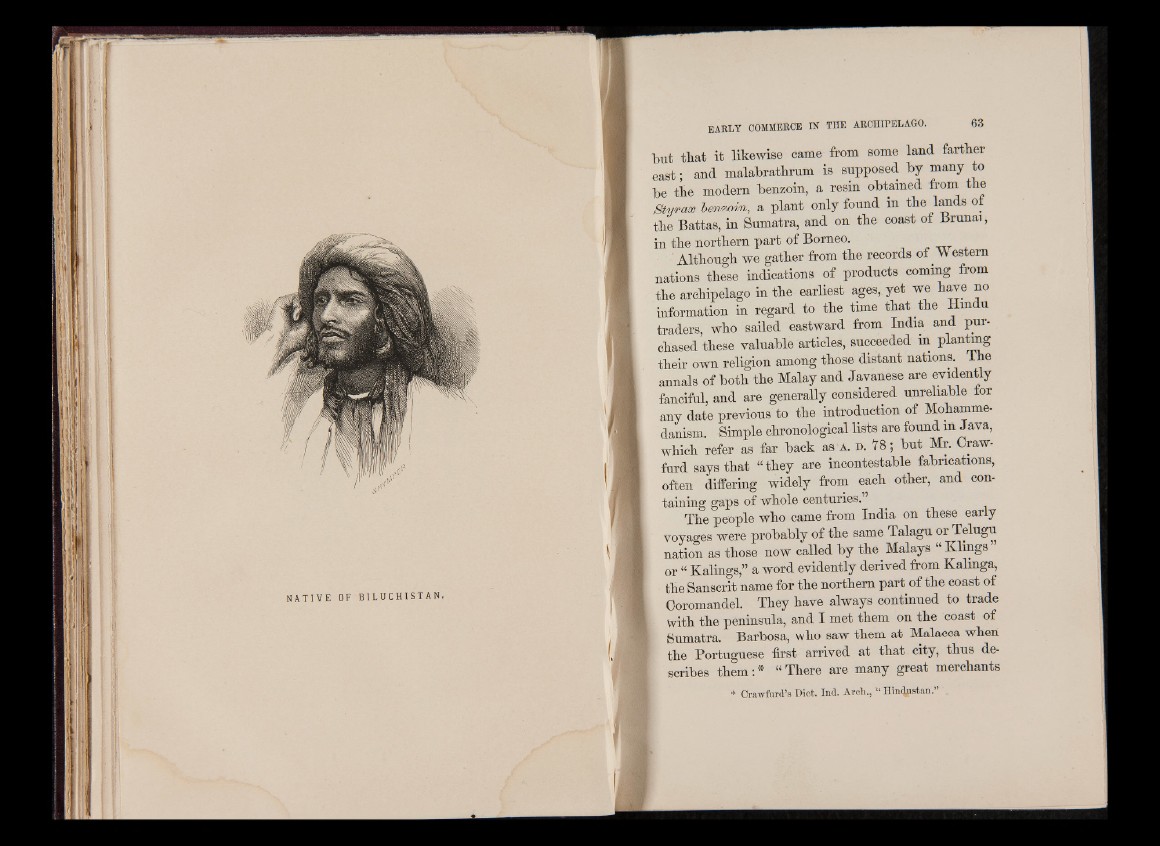
b
NAT I VE OF B I L U C H I S T A N .
but tbat it likewise came from some land farther
east I and malabratbrum is supposed by many to
be the modern benzoin, a resin obtained from the
Styrax benzoin, a plant only found in the lands o^
the Battas, in Sumatra, and on the coast of Brunai,
in the northern part of Borneo.
Although we gather from the records of western
nations these indications of products coming from
the archipelago in the earliest ages, yet we have no
information in regard to the time that the Hindu
traders, who sailed eastward from India and purchased
these valuable articles, succeeded m planting
their own religion among those distant nations. The
annals of both the Malay and Javanese are evidently
fanciful, and are generally considered unreliable for
any date previous to the introduction of Mohammedanism.
Simple chronological lists are found m Java,
which refer as far back as a . d. 78; but Mr. Craw-
furd says that “ they are incontestable fabrications,
often differing widely from each other, and containing
gaps of whole centuries.”
The people who came from India on these early
voyages were probably of the same Talagu or Telugu
nation as those now called by the Malays “ IOings
or “ Kalings,” a word evidently derived from Kalinga,
the Sanscrit name for the northern part of the coast of
Coromandel. They have always continued to trade
With the peninsula, and I met them on the coast of
Sumatra. Barbosa, who saw them at Malacca when
the Portuguese first arrived at that city, thus describes
them:* “ There are many great merchants
* Crawfu rd ’s Diet. Ind. Arch., “ H in d u sta n .”